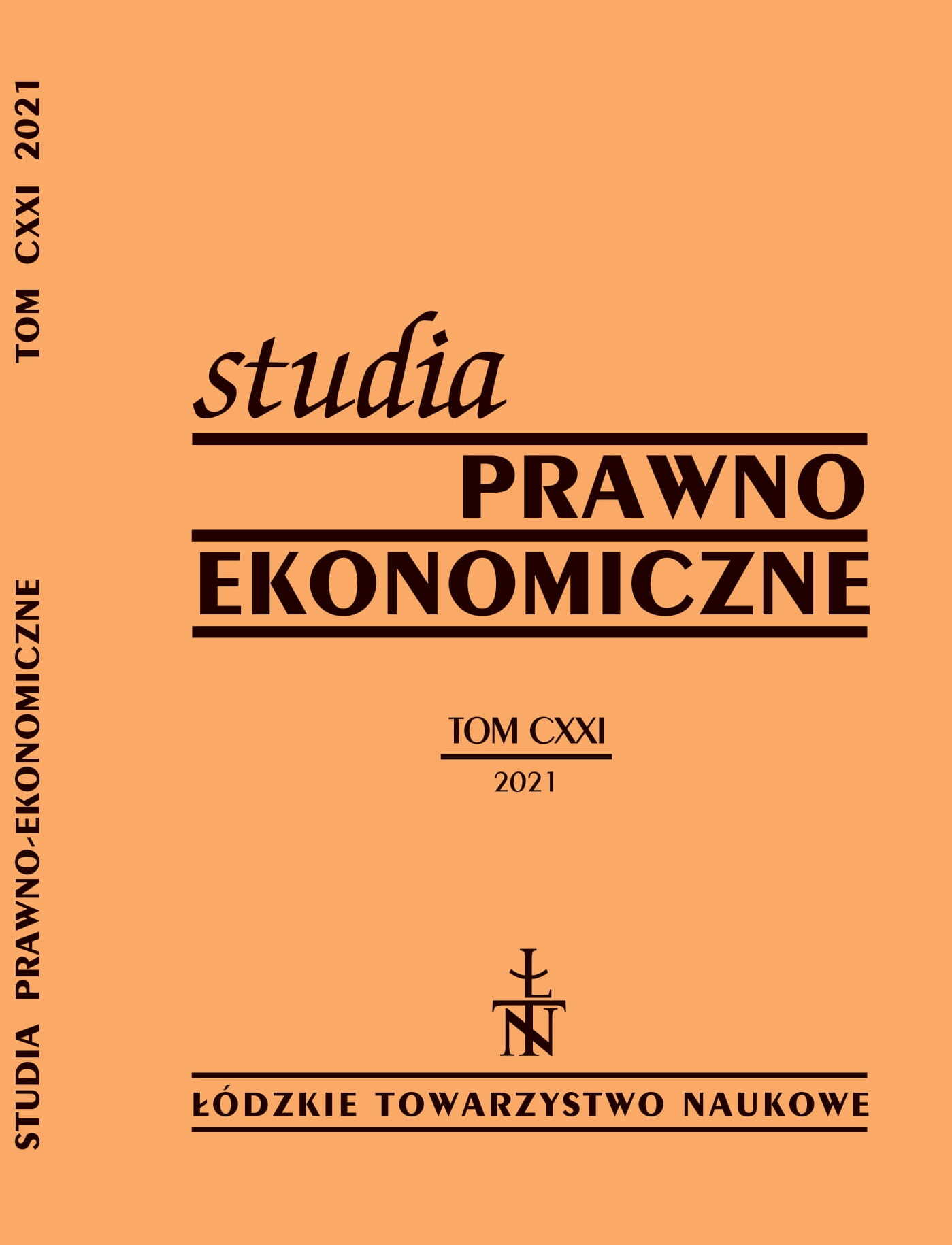The impact of Foreign Direct Investments, economic growth, and Energy consumption on carbon dioxide emission – an example of selected countries of the Visegrad Group
DOI:
https://doi.org/10.26485/SPE/2021/121/13Keywords:
FDI, economic growth, environmental protection, Visegrad Group, quantile regression modelAbstract
Background: The article is part of a larger research into the impact of macroeconomic variables on the environment. It is a topic often discussed in the literature, but there are no clear conclusions about the impact of foreign direct investment (FDI), economic growth, or energy consumption on carbon dioxide (CO2) emissions and thus on environmental pollution. The results of the study provide new arguments in relation to the countries of the Visegrad group.
Research purpose: The authors aimed to examine the impact of FDI, economic growth, and energy consumption on carbon dioxide emissions in three selected Visegrad Group (i.e., Poland, the Czech Republic, and Hungary).
Methods: The article uses a panel quantile regression model that takes into account unobserved individual heterogeneity. Based on different quantile points, it takes full advantage of the sample data for regression analysis. This approach captures unobservable fixed effects as parameters to be estimated together with covariate effects for different quantiles.
Conclusions: The empirical results did not confirm the applicability of the “pollution paradise” or “pollution halo” hypotheses in relation to the studied countries. Therefore, it is not possible to conclude that developed countries transferring capital (i.e., FDI) to the countries analyzed in this analysis significantly contribute to high pollution in these countries, making them “pollution havens” (considering the period under consideration research). Nor was it confirmed that foreign companies apply better management practices and advanced technologies that favour a clean environment in the host country. In addition, the study found that energy consumption increases carbon dioxide emissions, with the strongest effects occurring at higher quantiles. Hence the conclusion that high carbon dioxide emissions in these countries are the result of the existing structure of energy production and consumption according to the criterion of energy carriers or production methods. This may indicate that policymakers in these countries should strengthen the relevant environmental legislation in this regard.
Downloads
References
Akbostancı E., Tunc G.I., Türüt-Aşık S., Pollution haven hypothesis and the role of dirty industries in Turkey’s exports, Environ Dev Econ 2007/12 (2), s. 297–322.
Ambroziak Ł., Chojna J., Gniadek J., Juszczak A., Miniszewski M., Strzelecki J., Szpor A., Śliwowski P., Święcicki I., Wąsiński M., Grupa Wyszehradzka – 30 lat transformacji, integracji i rozwoju, Polski Instytut Ekonomiczny, Warszawa 2020, https://pie.net.pl/wp-content/uploads/2021/02/PIE-Raport-Grupa-Wyszehradzka.pdf.
Apergis N., Payne J.E., Menyah K., Wolde R.Y., On the causal dynamic between emissions, nuclear energy, renewable energy, and economic growth, Ecol. Econ. 2010/69 (11), s. 2255–2260.
Arouri M.E.H., Youssef A.B., M’henni H., Rault C., Energy consumption, economic growth and CO2 emissions in Middle East and North African countries, Energy Policy 2012/45, s. 342–349.
Cole M.A., Trade, the pollution haven hypothesis and the environmental Kuznets curve: examin¬ing the linkages, Ecological Economics 2004/48, s. 71–81.
Galeotti M., Economic growth and the quality of the environment, Environment, Development and Sustainability 2007/9, s. 427–454.
Grossman G.M., Krueger A.B., Environmental Impacts of the North American Free Trade Agreement, w: P. Garber (red.), The Mexico-U.S. Free Trade Agreement, MIT Press, Cambridge Massachusetts 1993.
Grossman G.M., Krueger A.B., Environmental impacts of a North American free trade agreement (No. w3914), National Bureau of Economic Research, 1991, https://www.nber. org/system/files/working_papers/w3914/w3914.pdf.
He J., Pollution haven hypothesis and environmental impacts of foreign direct investment: the case of industrial emission of sulfur dioxide (SO2) in Chinese provinces, Ecological Economics 2006/60, s. 228–245, https://doi.org/10.1016 / j.ecolecon.2005.12.008.
Jasiecki K., Rola i znaczenie współpracy gospodarczej państw Grupy Wyszehradzkiej w Unii Europejskiej od 2015 roku, Studia Europejskie – Studies in European Affairs 2020/24 (3), s. 183–205, https://doi.org/10.33067/SE.3.2020.10.
Kasman A., Duman Y.S., CO2 Emissions, Economic Growth, Energy Consumption, Trade and Urbanization in New EU Member and Candidate Countries: A Panel Data Analysis, Eco¬nomic Modelling 2015/44, s. 97–103.
Kivyiro P., Arminen H., Carbon dioxide emissions, energy consumption, economic growth, and foreign direct investment: causality analysis for sub-Saharan Africa, Energy 2014/74, s. 595–606.
Kruk H., Hipoteza rajów dla zanieczyszczeń – ujęcie teoretyczne, Prace Naukowe Uniwer¬sytetu Ekonomicznego we Wrocławiu 2014/347, s. 272–281, https://doi.org/10.15611/ pn.2014.347.25.
Lean H.H., Smyth R., CO2 emissions, electricity consumption and output in ASEAN, Appl. Energy 2010/87 (6), s. 1858–1864.
M. Mert, Caglar A.E., Testing pollution haven and pollution halo hypotheses for Turkey: a new perspective, Environ Sci Pollut Res Int. 2020 Jun 10, s. 1–11, https://doi.org/10.1007/ s11356-020-09469-7, https://www.ncbi.nlm.nih.gov/pmc/articles/PMC7283984/.
Menyah K., Wolde R.Y., CO2 emissions, nuclear energy, renewable energy and economic growth in US, Energy Policy 2010/38 (6), s. 2911–2915.
Munier N., Economic growth and sustainable development: could multicriteria analysis be used to solve this dichotomy?, Environment, Development and Sustainability 2006/8, s. 425–443.
OECD, Detailed Benchmark Definition of Foreign Direct Investment, Paris 1994, https://www. oecd.org/daf/inv/investmentstatisticsandanalysis/40193734.pdf.
OECD, Foreign Direct Investment for Development. Maximising Benefits, Minimising Costs, 2002, https://www.oecd.org/investment/investmentfordevelopment/1959815.pdf.
Salim R., Rafiq S., Hassan A.F.M.K., Causality and dynamics of energy consumption and out¬put: evidence from non-OECD Asian countries, J. Econ. Dev. 2018/33, s. 1–26.
Shaari M.S., Hussain N.E., Abdullah H., Kamil S.. Relationship among foreign direct invest¬ment, economic growth and CO2 emission: a panel data analysis, Int J Energy Econ. Policy 2014/4 (4), s. 706–715.
Wawrzyniak D., Weryfikacja środowiskowej krzywej Kuznetsa dla krajów Unii Europejskiej, Ekonomista 2018/3, s. 318–324.
Zhu H., Duan L., Yub Y.G.K., The effects of FDI, economic growth and energy consumption on carbon emissions in ASEAN-5: Evidence from panel quantile regression, Economic Model¬ling 2016/58, s. 237–248.
UNCTAD, https://unctad.org/topic/investment/world-investment-report; stan na 20.05.2021 r.



